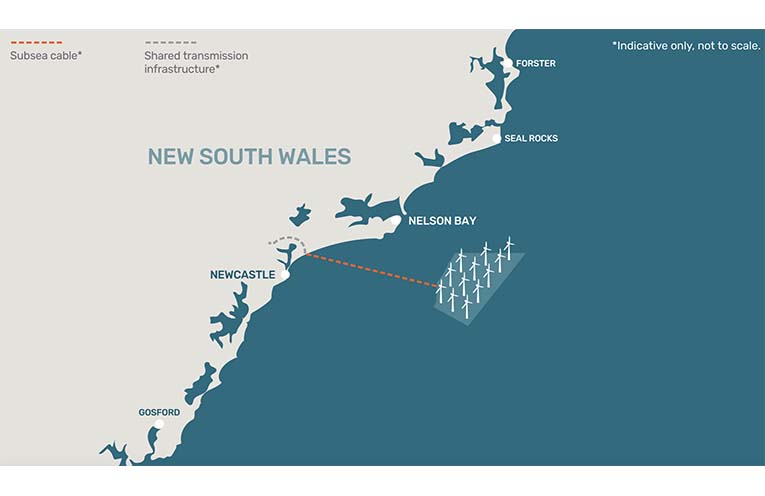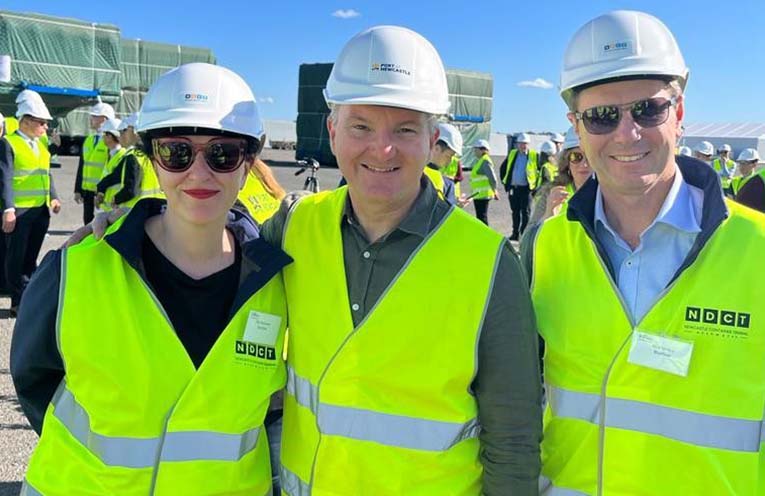
DESPITE assurances from both investors and government, people living along the Hunter coast remain most worried about environmental issues related to wind farms, a new report suggests.
Seabirds preying on bait schools attracted to the structures supporting the turbines being killed or injured and whales getting lost because of navigational interference are among concerns detailed in the report.
 Advertise with News of The Area today.
Advertise with News of The Area today.It’s worth it for your business.
Message us.
Phone us – (02) 4981 8882.
Email us – media@newsofthearea.com.au
The Australian Trade Fishing Association – while clearly stating it supports the push towards net zero emissions – details potential detrimental impacts on marine life and fishing, shipping, tourism, defence, and aviation industries.
“Issues such as area-exclusion zones, noise generation and electromagnetic impulses that affect migration patterns of fish, mammals and seabirds are not to be taken lightly,” the ATFA report said.
The report, released on June 30, listed wildlife and navigational issues as among potential pitfalls.
“While this is a national issue, the impact in the proposed area for the Hunter-Central Coast offshore wind farm, for example, covers the prime regions for pelagic sports fishing, particularly marlin, tuna, dolphin, fish and sharks,” the report said.
Energy Corporation of NSW (EnergyCo) is responsible for leading the delivery of renewable energy zones.
The corporation’s own literature states it is integral to “the NSW government’s vision to coordinate investment in electricity transmission, generation, storage and firming infrastructure and transform the NSW electricity system into one that is cheap, clean and reliable”.
A spokesperson for Energyco this week told News Of The Area, “NSW will work closely with the commonwealth on the development of the proposed Hunter offshore wind area, which is located in commonwealth waters at a distance of at least 10 kilometres from shore.
“If the development of offshore wind proceeds in the Hunter region, projects will be required to undergo a rigorous environmental impact assessment and approvals process, which will include assessing potential impacts on the marine environment and bird life,” the spokesperson said.
“Extensive community engagement will also be undertaken as part of this process.
“Environmental approvals will be required from both the NSW governent and commonwealth before offshore wind projects are constructed off the coast,” the spokesperson said.
Last week BlueFloat Energy, the developer of the Eastern Rise Offshore Wind Project, welcomed federal Climate Change and Energy Minister Chris Bowen’s declaration of the Hunter region as Australia’s second offshore wind zone.
Smaller than originally proposed, the Hunter zone was declared after two months of public consultation with the local community, industry and sea users.
The company’s Eastern Rise Offshore Wind Project is located within the declared zone, between Newcastle and Nelson Bay off the Hunter-Port Stephens coast in NSW.
With as many as 115 floating wind turbines and three offshore substations, the project is proposed for an area 25-45km off the coast.
It is set to generate enough electricity to power 825,000 homes, the equivalent of almost a quarter of all households in NSW.
BlueFloat Energy intends to apply for a ‘feasibility licence’, which will enable further work, including detailed environmental and technical studies, to be undertaken to validate the suitability of the location and inform project design and the environmental impact assessment process.
Nick Sankey, BlueFloat Energy’s Australian country manager, said, “we’re excited about the announcement of Australia’s second offshore wind zone and applaud the government’s feedback-oriented approach.
“We want to create lasting benefits for the Hunter region.
“Our recent public drop-in sessions represent the start of our consultation and there will be plenty of opportunities for feedback during the design and approvals phase.
“This is a fantastic step towards Australia’s clean energy future,” Mr Sankey said.
The company’s environment and planning chief Deb Neumann said consultation was a priority.
“At the public drop-in sessions in the region, we heard that whilst the transition to renewable energy is supported, the community wants a focus on studying the potential impact of the project on the marine environment, particularly whales and migratory birds.
“These studies and related analyses will be undertaken during the environmental assessment phase,” she said.
By Marian SAMPSON

